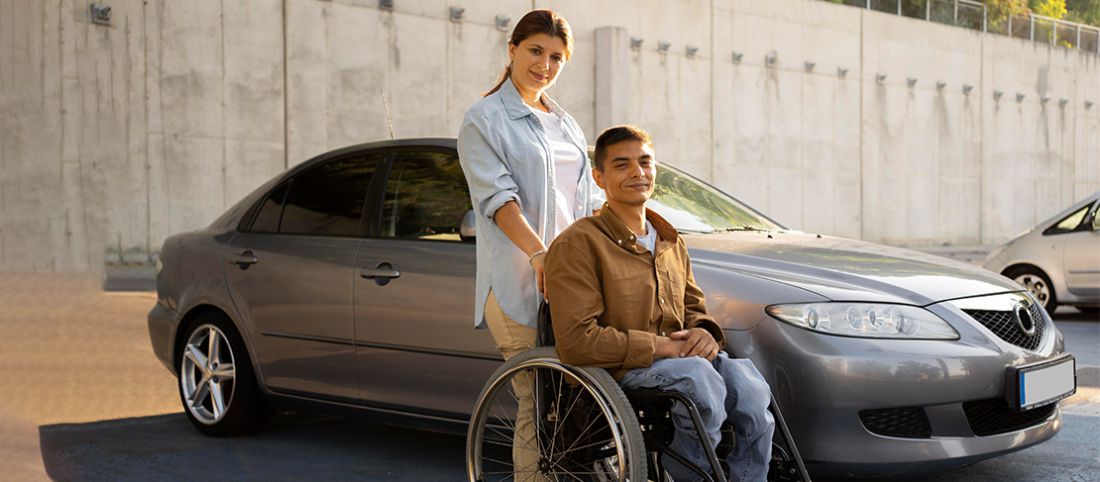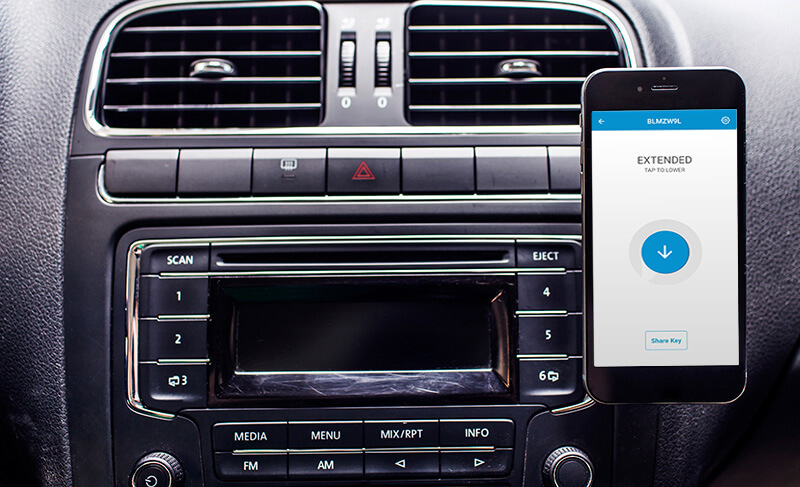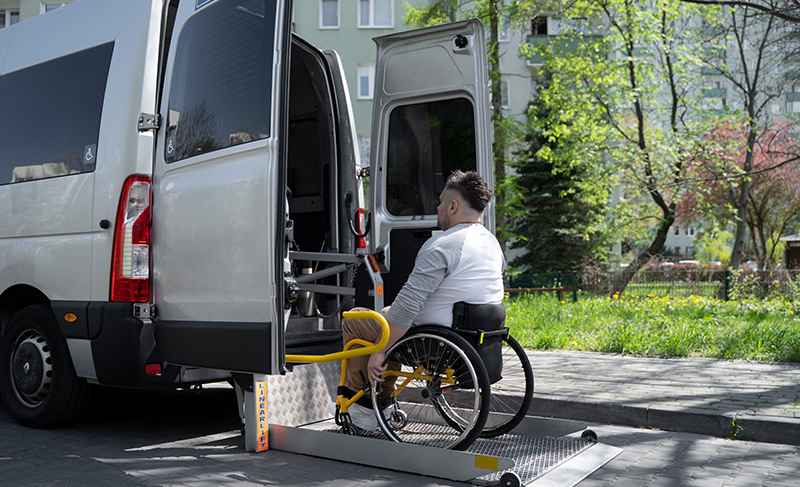How To Protect Parking For Disabled Persons - A Complete Guide

Parking should be accessible to everyone. Parking spots reserved for disabled persons, also referred to as “accessible parking bays," are extremely important because they allow people with mobility limitations, health conditions, or other challenges to have safe access to community buildings, shopping malls, businesses, and services. These parking spaces need to be properly protected to ensure that they remain available for those who truly need them. In addition to explaining protection best practices, this blog will cover the most important aspects of providing accessible parking, such as location, size, signage, and guidelines for providing a sufficient number of accessible parking spots.
Table of contents:
The Importance of Parking Facility Accessibility
An accessible parking bay is a parking space that is reserved for people with disabilities or other mobility issues who have a valid accessible parking permit. These spaces are wider than standard parking spaces and may include additional accessibility features such as specially marked pedestrian ramps and vertical clearance to accommodate wheelchairs. Parking facility owners need to invest in making their lots accessible, both for the safety of their customers and employees and to comply with local and federal laws.
Location
Parking bays for the disabled are to be located on level pavement along the shortest accessible route to an accessible entrance. In most cases, this means they will be in front of or near the entrance to the building or facility. If no accessible bays are available on level pavement adjacent to an accessible entrance, accessible spaces can be located anywhere on site as long as they are close to an accessible entrance ramp or lift. An accessible route must be at least 3 feet wide, be free of curbs and stairs, and have a firm, stable, and slip-resistant surface.
Dimensions
Another crucial aspect of accessible parking is the amount of space it offers. The dimensions of accessible parking bays ensure that nobody can park their vehicle too close to the disabled person’s vehicle. They are approximately 1.2 meters wider than a standard bay, and they have a total width of at least 3.6 meters. This allows enough space for a disabled person to safely navigate their vehicle and assemble any mobility equipment they require. One access aisle can be shared by two accessible slots, meaning that these extensions don’t need to be duplicated for each individual space, with the exception of angled parking, where the aisle must be located on the passenger side of the parking bay.
Maintenance
A clean and well-maintained accessible car park, sidewalk, or route is crucial for ensuring the safety of wheelchair users and other people with mobility impairments. Repair any cracks in accessible parking lots and sidewalks as soon as possible. Fill pavement holes with asphalt or concrete right away to prevent wheelchair and walker accidents. Inspect the ramps at least once a year to make sure they're secure and stable. If necessary, have them repaired or replaced.

Best Practices For Protecting Accessible Parking Spaces
Businesses and communities often struggle with people who illegally use accessible parking slots. They do not have any mobility issues, and they park there only to avoid paying for parking or to save time. Fortunately, there are several steps that can be taken to ensure that your disabled parking slots remain available for those who need them most.
Have Clear & Consistent Signage
The first step to reducing illegal use of disabled parking spaces is proper signage. All accessible parking bays must be clearly marked with a pole-mounted international symbol of accessibility. Make sure you place it at eye level for drivers. Wherever possible, signs at the street's entrance should indicate how many accessible parking slots are available and how far they are from the entrance. Non-disabled people will be discouraged from parking there, while the disabled will be able to park quickly and easily.
Mark Disabled Parking Spaces
To make sure that disabled parking spaces are easily identifiable, they're painted with blue and white markings on a slip-resistant surface; blue for the background and white for the handicapped-accessible symbol. However, you can also use yellow, red and green. The goal is to ensure that these markings stand out from the surrounding surface of your pavement. Access aisles and adjacent accessibility zones should be painted with diagonal hatch marks to discourage parking in them.
Install A Single Parking Space Barrier
A single parking bay barrier is a parking barrier designed to protect a single handicapped parking space. This kind of barrier is used in residential garages or corporate car parks where handicapped parking bays are designated for individual residents or employees with proven mobility impairments.
There are many different types of single parking bay protective barriers on the market today, and they come in a variety of sizes, shapes, and colors. But, in this context, the most important barrier feature is automation, which simplifies the entire opening and closing process and gives the disabled person the autonomy to control the barrier from the comfort of his vehicle without anyone's help.
Our blog, Top 9 automatic parking barriers provides a complete analysis of all major varieties of automatic parking barriers presently available on the market, as well as their primary benefits, so you can make an educated choice when selecting one for your commercial or residential property.

Also read: The best protection for your parking bay
Pair Disabled Zone Protecting Barriers With ANPR
If you operate a commercial or municipal lot with a special disabled parking zone, a gate, bollards, or chain barrier combined with an ANPR system is the best approach to ensure that the designated zone is not abused by those who do not have a valid disability parking permit.
The system uses cameras to scan for license plates as vehicles enter and exit the area. If a vehicle does not have a valid disability permit, then it will be unable to gain access to the lot or garage since the barrier will not open. It is important to note that this type of system can also be used for other types of zones, such as staff-only areas, or even for general public use if you are looking for a more secure way to manage who enters your building.
Overall, disabled zone-protecting barriers paired with ANPR technology are a highly effective way to prevent unauthorized vehicles from entering restricted areas while simultaneously enabling free-flow access to persons who have officially registered permits.
Also read: Why Is Parking Access Control Vital For Companies
Require Enforcement Support
When you encounter disabled parking violations on your property, you can request enforcement support from your local police department. In most cases, a law enforcement officer will issue a ticket for those who park in a disabled space without proper authorization. The ticket may be issued to the vehicle owner or to the person driving it at the time of the offense.
In addition to issuing tickets for disabled parking violations, police can tow away illegally parked vehicles that obstruct access to spaces reserved for people with disabilities.
Increase Awareness with empathetic signage
We all want to be seen, heard, and understood. And that's exactly what empathetic signage can do for the people with disabilities who park in your parking facility. Empathetic signage and campaigns like “Think of Me—Park Legally” aim to raise awareness of the needs of people with disabilities. They're meant to make others think twice about their actions and hopefully lead them to change their behavior so they can be more considerate towards all people with disabilities.
Empathetic signage is a great way to help create an inclusive environment that makes everyone feel welcome. It's also a great way of portraying your business or organization as one that cares about its customers.
Guidelines for providing required accessible parking spaces
When designing a parking lot, it is important to take into consideration the needs of people with disabilities. The information below will assist you in determining the number of accessible parking spaces that should be provided based on local laws and regulations.

USA Handicapped Accessible Bay Regulations
In the United States, your parking facility must be designed in accordance with the ADA Standards for Accessible Design. A certain number of handicapped-accessible bays is to be set aside based on the number of parking spaces available at a site or in a facility. Furthermore, one out of every six handicapped parking stalls should be reserved for vans. These rules apply to all types of parking, including public, employee, and time restricted parking areas.
| Total Parking Spaces on Lot | Required Minium Number of Accessible Spaces | Required Minimum Number of Van-Accessible Spaces |
| 1-25 | 1 | 1 |
| 26-50 | 2 | 1 |
| 51-75 | 3 | 1 |
| 76-100 | 4 | 1 |
| 101-150 | 5 | 1 |
| 151-200 | 6 | 1 |
| 201-300 | 7 | 2 |
| 301-400 | 8 | 2 |
| 401-500 | 9 | 2 |
| 500-1000 | 2% total parking provided | 1 out of every 6 accessible parking spaces |
There are some exceptions to the regulations for specific facilities and establishments. For example, medical facilities that offer outpatient services, patients and visitors should have an additional 10% of parking slots. In addition to the minimum required conditions shown in the table above, rehabilitation clinics that serve mobility-impaired patients should have an additional 20% of parking spaces. Handicap parking is not required in car parks used solely by trucks, buses, police enforcement vehicles, delivery vehicles, and car impound facilities.
EU Handicapped Accessible Bay Regulations
In most EU countries, disabled parking spaces are required in commercial and public car parks. The number of legally required disabled parking bays varies by country, but the European Union and European Economic Area section of the FIA Guide for the Disabled Traveler provides an overview of the required parking spaces by country. All you have to do is go to the FIA guide, click on the link with the country name you need information for, and read through the regulations pertaining to disabled parking.
UK Handicapped Accessible Bay Regulations
According to the BSI British Standards, "Code of Practice for the design of buildings and their approaches to meet the needs of disabled people," commercial premises with designated off-street parking should have one space for every employee who is a disabled motorist, plus 5% of the total capacity for visiting motorists, and a further 4% should be enlarged standard spaces.
The DPA (Disabled Parking Accreditation) recommends the following allocation:
| Total Parking Spaces on Lot | Required Minimum Number of Accessible Spaces |
| 1-50 | 2+ 3% total parking spaces |
| 51-200 | 3+ 3% total parking spaces |
| 201-500 | 4+ 3% total parking spaces |
| 501-1000 | 5+ 3% total parking spaces |
Make your parking more accessible
Making your parking lots accessible entails far more than simply following the law. It is about ensuring that every customer, guest, or employee feels welcome and comfortable when they visit your business and that your parking operations reflect your brand's values. By following the protection best practices described in our guide, parking managers can strengthen their commitment to protecting disabled parking spaces while also improving the overall experience for everyone who uses their facilities.


